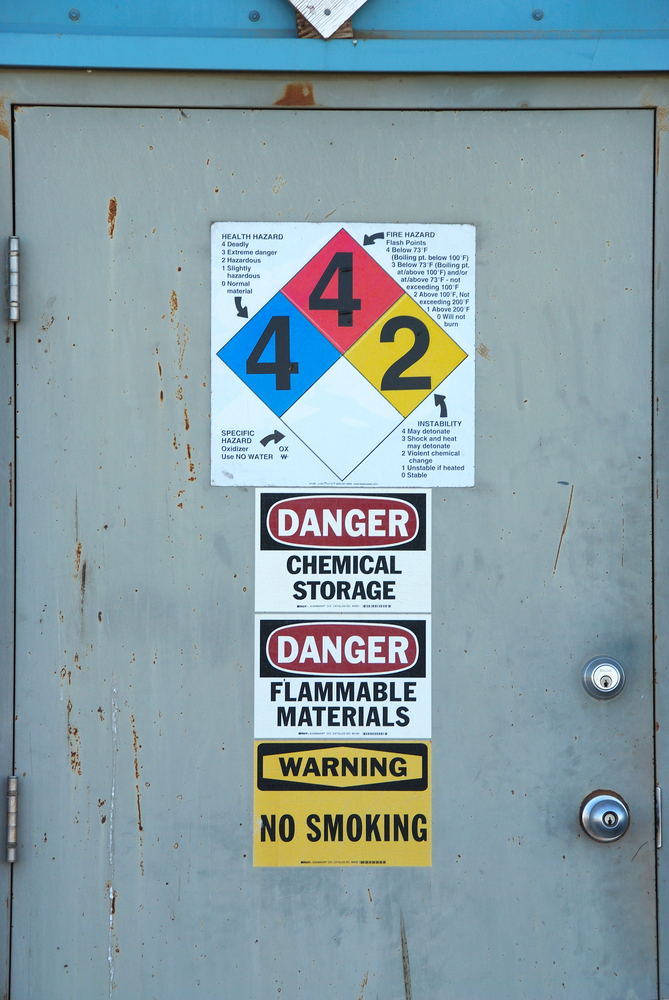 Some 43 million American workers need to be trained by December 1st on the new update to the OSHA HazCom standard called the Globally Harmonized System or GHS. In announcing the requirement, OSHA officials trumpeted that “the Hazard Communication Standard in 1983 gave the workers the ‘right to know,’ but the new Globally Harmonized System gives workers the ‘right to understand.’”
Some 43 million American workers need to be trained by December 1st on the new update to the OSHA HazCom standard called the Globally Harmonized System or GHS. In announcing the requirement, OSHA officials trumpeted that “the Hazard Communication Standard in 1983 gave the workers the ‘right to know,’ but the new Globally Harmonized System gives workers the ‘right to understand.’”
It is worth taking a close look to see what that means, especially when it comes to OSHA training. Let’s start with definitions.
Know vs Understand Definitions As They Relate to OSHA
In most dictionaries “know” and “understand” mean just about the same thing. However, in practical use, the “right to know” in HazCom has meant giving workers access to information. We label chemicals and provide MSDS, but that sure hasn’t meant workers understand them. In fact, the evidence is that they don’t understand the technical details of a Material Safety Data Sheet. In releasing the new GHS rule, OSHA said, “several studies show that employees do not understand approximately one-third of the safety and health information listed on (MSDSs) prepared in accordance with the current standard.”
GHS tries to solve that by standardizing the safety data sheets and labels and by requiring pictograms that communicate the hazards of each chemical. And it goes a step further by requiring that every worker in America who may be exposed to hazardous chemicals be trained in the new GHS updates. In other words, OSHA is sending a message that it is not enough to just provide the information to workers; the goal of GHS is to make sure workers can understand that information. It is as if, after years of telling companies to post their 300a job-related injuries and illness forms, OSHA suddenly said, “and you need to make sure every worker understands the results.”
At this point, maybe a reality check is in order. “Right to Know” is an old and respected legal principle, but the term doesn’t appear anywhere in OSHA’s Hazard Communications regulations and the term “Right to Understand” doesn’t appear anywhere in the updated regulations. In fact, the new standard doesn’t even use the word “understand.” Anywhere. And even though the updated regs require training for more than 40 million workers in about five million workplaces, the regulatory requirements for what the training needs to consist of really hasn’t changed at all. As it turns out, the “know” vs. “understand” concept didn’t even originate with OSHA. It was first suggested by a steelworkers union representative who said, ‘‘the HCS in 1983 gave the workers the ‘right to know,’ but the GHS will give the workers the ‘right to understand.’ ‘‘ OSHA officials just liked the phrase so much they adopted it.
But how big a deal is this change from “Right to Know” to “Right to Understand?” The answer, of course, isn’t in what the regulations say, it is in how OSHA interprets and enforces the GHS changes in the field. The regulations have always given OSHA a lot of latitude. Will they use that to change the way they measure compliance?
How Should We Address the Differences
 Here is one way to look at the potential difference: In the past, when determining whether a company made HazCom information known to workers, OSHA inspectors checked to see whether MSDS were on file and whether there were records that proved workers were trained. But if the new standard is interpreted to mean that an employer’s obligation is to make sure workers understand hazard communications, it will be a game changer. Some have suggested that OSHA inspectors could quiz workers to see if they can explain what different pictograms mean or are able to find information on a label.
Here is one way to look at the potential difference: In the past, when determining whether a company made HazCom information known to workers, OSHA inspectors checked to see whether MSDS were on file and whether there were records that proved workers were trained. But if the new standard is interpreted to mean that an employer’s obligation is to make sure workers understand hazard communications, it will be a game changer. Some have suggested that OSHA inspectors could quiz workers to see if they can explain what different pictograms mean or are able to find information on a label.
An example of how this could change employer obligations can be seen in the offshore oil and gas rules. In the past, oil and gas companies were required to make sure workers were trained in certain procedures to safely drill and control production from offshore wells. Compliance largely involved saving certificates to make sure personnel had gone through approved schools. But then along came the BP Deepwater Horizon disaster and the rules changed. Now the regulatory focus is on showing that workers have “skills and knowledge” to do their jobs effectively and safely. Now the test isn’t whether a worker went to class; it is whether he understood what he was taught.
Sure enough, after an offshore well control incident recently, the agency that oversees offshore safety administered a test to everyone involved in the procedure. Three workers flunked, including one of the on-site managers. It sent a strong message to oil companies and their contractors. It is not enough to collect training certificates. Now they need to make sure workers actually learned the material. OSHA has for years tried to ensure this same result by requiring site specific instruction as a component of a worker’s HAZWOPER certification. You can find the HAZWOPER 40 and more at e-Training Inc..
Will OSHA Take This Approach to the New HazCom Standard?
There is no publicly released document that outlines the agency’s enforcement strategy come December 1st, but employers are well advised to take the requirement for GHS training seriously. As educators, we need to make sure we aren’t just force feeding material to students; We need to make sure they are actually absorbing it. For companies, the challenge is to send workers through training that goes beyond just “check the box” compliance training and actually gives them the tools they need to do their jobs safely and protect themselves from injury. But when all is said and done, isn’t that what it is all about?



